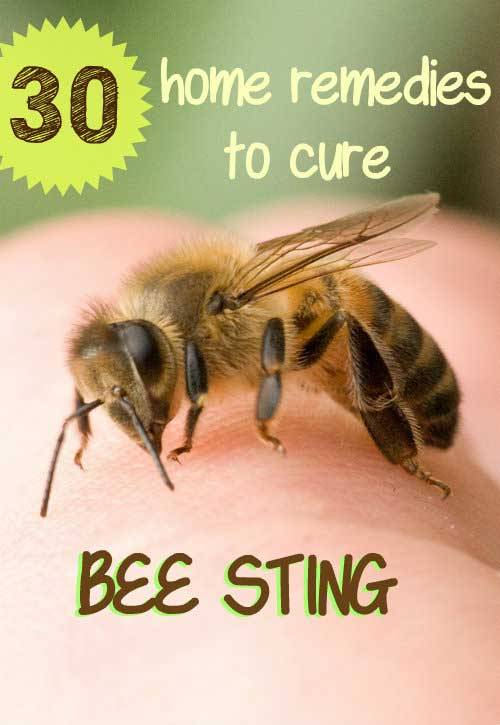
Having a moderate reaction doesn't mean you'll have a severe allergic reaction the next time you're stung. Moderate reactions tend to resolve over five to 10 days.
Bee sting remedy for pain how to#
You can take several steps to avoid bee stings - as well as hornet and wasp stings - and find out how to treat them if you do get stung. But if you're allergic to bee stings or you get stung numerous times, you may have a more-serious reaction that requires emergency treatment. In most cases, bee stings are just annoying, and home treatment is all that's necessary to ease the pain. Those at risk can get a prescription for an epi-pen, which allows you to administer epinephrine yourself if you have a severe reaction.Bee stings are a common outdoor nuisance. If you've had a mild or moderate allergic reaction to an insect sting before, you should discuss this with your doctor, as this may increase your risk for anaphylaxis in the future. This counteracts the hormones your body releases in response to the sting and prevents your body from going into shock, Cutler says. In the case of anaphylaxis, you must be treated with an adrenaline injection, known as epinephrine. Signs of anaphylaxis can occur within minutes of a sting and include: It's estimated that 90 to 100 Americans die every year due to anaphylaxis from an insect sting. In fact, about 3% of adults who experience insect stings develop a life-threatening allergic reaction known as anaphylaxis, which does require immediate medical attention. But some allergic reactions are more severe. Swelling in other areas of your body, in addition to the sting siteĪccording to Cutler, most allergic reactions are mild or moderate, and can still be treated at home with antihistamines and ice.Excessive itchiness that persists past a few hours.Signs of an allergic reaction from a bee sting include: What to do if you have an allergic reactionĪbout 5% to 7.5% of Americans will experience an allergic reaction to an insect sting at some points in their lives, according to the Journal of Asthma and Allergy. Once the stinger is removed, wash the site with soap and water.Īfter you remove the stinger, you can use a few remedies to treat the pain, itchiness, and swelling that can accompany a bee sting. Don't try to pull the stinger out with tweezers or your fingers - this could result in even more venom squeezing into the skin.ģ. Use a scraping motion with a flat, blunt object like a credit card across the affected area to remove the stinger.Ģ.

But if a honey bee stings you and the stinger remains in your skin, it can continue to pump toxins into your body, which will make symptoms worse if it's not removed.ġ. You won't need to remove a stinger if you're stung by a wasp, hornet, or carpenter bee.

Other types - like carpenter bees, or venomous insects like wasps - have smooth stingers that stay attached to the insect, and they can sting you multiple times before flying away. Some types of bees - like honey bees - have barbed stingers that remain in your skin. You'll see a small black dot at the sting site, if so. First, it's important to immediately remove the stinger from your skin, if it's still there.


 0 kommentar(er)
0 kommentar(er)
